
How Smartphones Are Causing Presbyopia in 20 to 30-Year-Olds
The last thing any of us want is to age before we have to. Whether it’s through magazine covers or websites, we’re bombarded with “miracles” and “cures” for aging. The harsh truth is there is no cure to aging, especially when it comes to eye health. You can use anti-aging cream for your skin, Spanx for your body, but there is no quick remedy for aging eyes. There are things you can do to slow the progression of aging eyes, but for the time being, once your vision declines due to age, it stays that way. So what’s the connection between smartphones and presbyopia?
Smartphones have been criticized on numerous accounts for causing digital eye strain, and now they’re under investigation for potentially causing premature presbyopia. Misaki Ishioka, of the Misaki Eye Clinic in Tokyo, has noticed a sudden surge of presbyopia, an age-related vision condition, in people ages 20 to 30. Ishioka, wondering what could possibly be causing old eyes in young people, has a hunch: smartphones.
What Is Presbyopia?
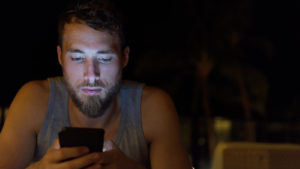
One certainty in life is that we all age no matter what. We can do our best to slow the process, but age catches up to us eventually. The same applies to your eyes. Presbyopia is a natural aging condition that comes to fruition usually after you turn 40. More specifically, it’s a condition that affects your eye’s ability to focus on objects close to the eye. This is caused by the loss of flexibility in the eye’s lens.
Presbyopia is a natural step in the aging of your eyes and because of this, there is no permanent cure. You can, of course, temporarily improve the condition with eyeglasses or even through natural treatments like daily eye exercises and simply adapting your daily life to your eyes’ needs (for example, setting a larger font size on your cellphone).
Whether you’re old or young, it’s important to know the symptoms of presbyopia. Knowing how to spot presbyopia will help you avoid prolonged headaches and eyestrain. The sooner you spot it, the sooner you can start treating it.
Some warning signs may include difficulty completing the following tasks:
- Focusing on reading material at arm’s length
- Reading small or fine print
- Making out objects in front of you
Though there’s no guarantee any of these symptoms are presbyopia, it’s best to make an appointment with your eye doctor. Regular eye exams are essential in the fight to keep your vision healthy.
How Smartphones Affect Your Eyes
We have all been warned not to stare at screens for too long, be it by a health professional, our parents, or an article we may have found online. Whether acting on fact or common sense, there is some truth to what you’ve heard. Staring at a smartphone for too long and too close can have some serious repercussions on your eyes.
If you work in an office, you’ve likely been warned about digital eye strain or Computer Vision Syndrome (CVS), a condition often developed from the prolonged use of screens (whether it is a smartphone, computer, television, etc.). It’s important to understand the dangers of digital eye strain and CVS in order to best preserve the longevity of your vision.
Smartphones and Presbyopia
American adults spend around five hours per day staring at digital devices. Though the term “digital devices” is rather general and covers a broad spectrum of devices, our smartphones are our go-to devices first thing in the morning and last thing at night.
It’s also true that almost 85 percent of Americans now own a smartphone, making it the most owned digital device. Of course, this is no surprise to anyone. Smartphones are handheld computers that fit in your pocket. You can take them anywhere and have anything you can imagine right at your fingertips. The real surprise is that the number is not much higher.
Though this statistic may not represent how smartphones are affecting young eyes, it is a clear indication that more studies need to be done on how these tiny screens can have a serious impact on our eye health.
Smartphones and Eye Health
Eye conditions and diseases related to smartphone use are believed to be caused by several factors:
- Text and images on the screen are small, forcing our eyes to adjust and focus which prolonged use can lead to strain.
- The distance we hold our smartphones from our eyes is too close. Unlike a book or a magazine, we often hold our phones a solid five inches closer, causing more stress on the eyes.
- The screen is too bright. Even with adjustable brightness, a lot of us keep our phones at 100 percent brightness, especially in poorly lit rooms. Again, this contrast of light can cause headaches due to eye strain.
Where does presbyopia fit in exactly? Well, though it is true that excessive smartphone use causes an extreme amount of strain, your eyes’ crystalline lens, which helps you focus, is also overworked. As mentioned in the above section, presbyopia is caused by the thickening of the lens due to age, which is what is speculated to happen to young eyes when smartphone use is abused.
Young eyes are increasingly at risk of developing early presbyopia. If this early-onset form of the disease is anything like regular presbyopia, it may not be able to be reversed. This is a bigger problem today as smartphones continue to become more and more sophisticated and harder for people to resist. But this doesn’t mean that there isn’t a way around early presbyopia.
How to Protect Your Eyes
The best way to protect your eyes is through preventative measures. Not always, but most of the time your vision has trouble bouncing back to what it once was. Why wait for your vision to get to the point of no return when you can take a few cautions to preserve your much-needed vision?
First thing’s first: put down the smartphone. It won’t be easy to do, but we’re also not asking you to quit cold turkey. Limit your smartphone use. The easiest way to do this is to set times of day that are strictly smartphone-free. For example, during dinner or an hour before bed (to avoid that brightness contrast we talked about earlier). Most phones even have built-in timers you can turn on to limit how much you use certain apps.
If you do find yourself on a long commute to somewhere and don’t have any other source of entertainment other than your smartphone, we understand. We ask but one favor, just take a break from the screen every now and then.
One final way that will help strengthen the eyes and help those already afflicted with presbyopia is by making sure you’re getting the best vitamins and nutrients for your eyes. Your diet plays a major role in overall improved eye health, and anything you can do to strengthen your vision now will surely pay off in the long run.
Our Rebuild Your Vision Ocu-Plus Formula Contains All 17 Vitamins, Minerals, and Herbal Supplements to Improve Your Eye Health!





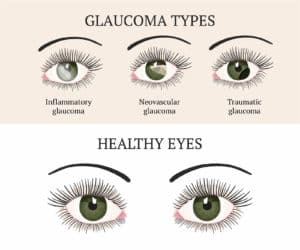

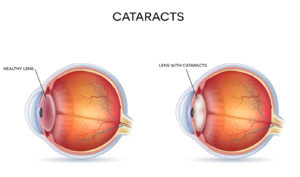
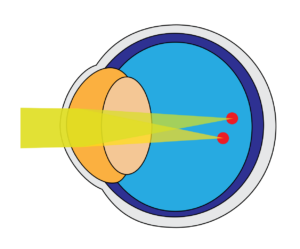
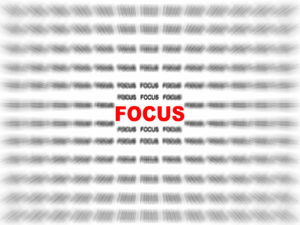

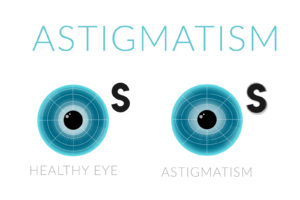
Hello, Your article is spot on! But did you know that cell phones, (EMF) also affect hearing? Check it out, the side of your head where you hold your phone, in most people, has weaker vision AND weaker hearing. This will get worse.with the more powerful towers being installed.. And heaven forbid when they put smaller ‘towers’ in neighborhoods with stronger frequencies.
Dr. V. Marie
Im a 26 yr old who was.diagnosed with presbyopia at around 19 yrs old. I didnt have a smartphone back then so I doubt it was that. I think my condition appeared because of studying for long stretches of time for exams and staying up late finishing projects for college without breaks. I am glad to know I am not the only young person with this condition. Since I haven’t gotten to know anyone else with it in my hometown.
I really don’t think you hadpresbyopia at age 19. I think most likely you had accommodative insufficiency or convergence insufficiency, which had similar signs of presbyopia but reversible with proper therapy.